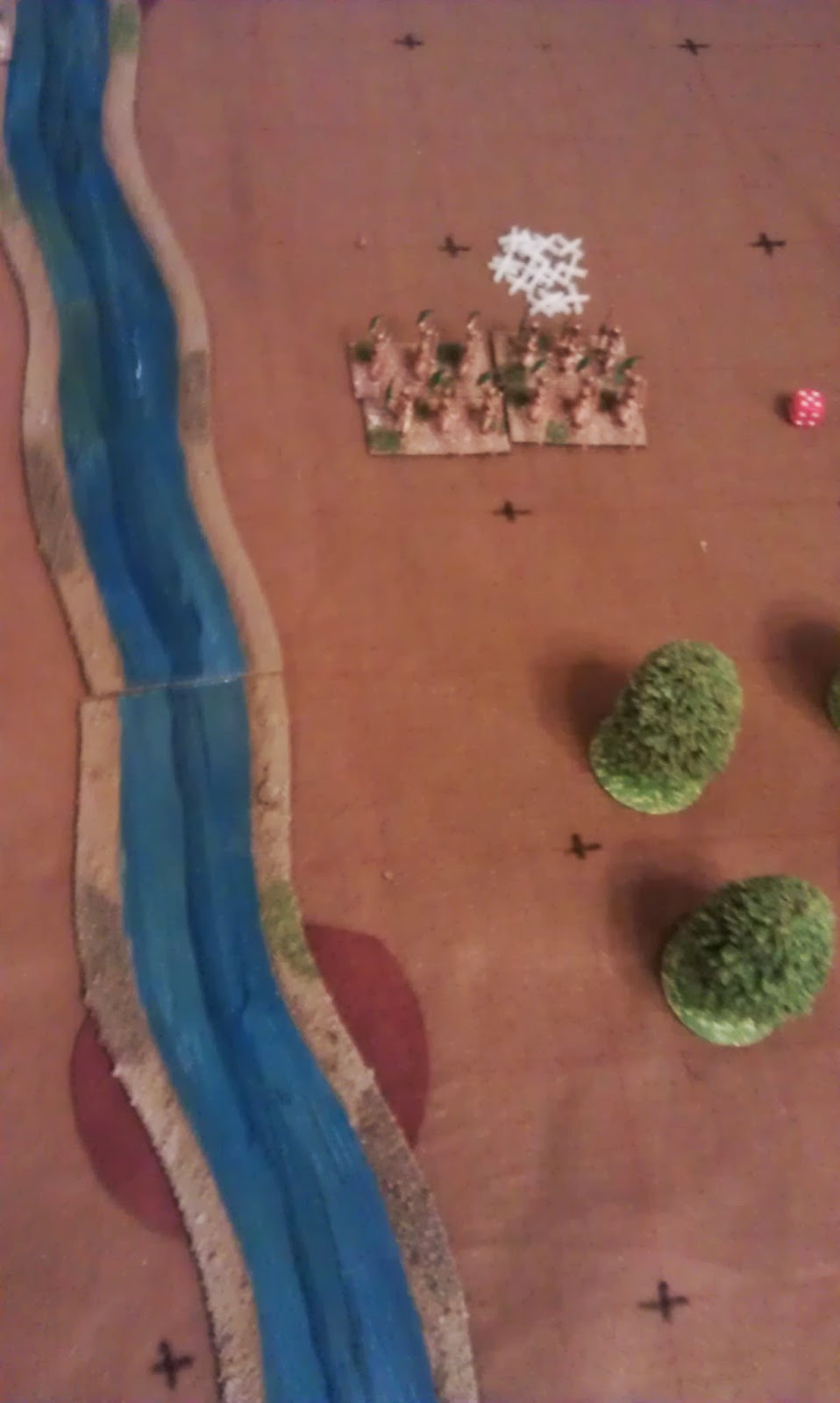I finally got around to putting on a game using Neil Thomas's Nineteenth Century wargames rules last year. I opted for a Franco-Austrian game so it doesn't suffer from the overwhelming firepower of breechloading rifles and is an interesting exercise in the balance of shock vs rifled muskets. Plus I like the Austrian and French uniforms.
Tim and Mark took the Austrians, Kayte and John the French. The scenario is the standard 'pitched battle' from the book, both sides get eight units (semi randomly determined) and in this scenario, the winner is the one who controls two of the three objectives, the two towns and the big hill.
Infantry only have two formations, firing line (two ranks) which is immobile and 'column' (or perhaps more correctly for this era, 'waves') which allows them to move and also fire at considerably reduced effect. In 1859 most troops were in open order and armed with rifled muskets, although the rules do cater for earlier close order troops of e.g. the Carlist Wars as well as those throughly modern chaps with their needleguns and Chassepots. Cavalry do still have some use, but are a strictly one time use weapon unless you are very, very cautious with them. Remind me of the last cautious cavalry commander you met though... one special rule for this campaign is that the typically broken and dense Italian terrain gives all units cover benefits, whether they are actually in cover or not. That makes charging a more viable tactic, a lesson the Austrians took away from 1859 and applied disastrously against the Dreyse armed Prussians in 1866.
 |
| The diminutive battlefield, 80cm x 80cm. French side. |
 |
| The French lined up, cavalry, Chasseurs, Zoaves, four line regiments and three artillery batteries. |
 |
| The Austrians, six infantry, two guns, cavalry and Croatian grenzers. |
 |
| Austrian columns march up the left hand road. |
 |
| A huge clump of French march down the railway line. |
 |
| Austrians fan out at the crossroads. |
 |
| French grand battery on the hill. |
 |
| French flank and assault the town. |
 |
| Johns appalling dice throws see the French repulsed by a few Croatian jagers. |
 |
| Marks Austrians deploy. |
 |
| The town finally falls. |
 |
| French flankers advance through the forest. The Austrian cavalry takes some hits. |
 |
| The Austrians deploy to meet the French attack. |
 |
| Gallant French columns storm the gun positions taking huge casualties. |
 |
| The French try again. |
 |
| Typical French dice rolling. |
 |
| Typical Austrian rolling. |
 |
| French and Austrain cavalry engage as the remaining Austrian guns flee. |
 |
| Over on the left, the Austrians press on. |
 |
| The fighting in the woods is 'confused'. |
 |
| Austrians approach the river crossing, on regiment deploys into line to fire while the other presses on in column. |
 |
| The surviving Austrians counterattack on the hill. |
 |
| Once more, typical Austrian (white) and French (red) dice rolling. |
 |
| Leaving the Austrians looking good on the hill. |
 |
| The Austrians also clear out the woods. |
 |
| And push on to the town. |
 |
| However the French drive them off leaving them in possession of two objectives at the end of the game. |
This was a ton of fun and all the players seemed to enjoy themselves. Like all ruler based rules it suffered a bit from silliness around measuring, wheeling and flank attacks, but that apart produced reasonable results quickly and simply.
It struck me that given the fairly standard move and range bands, it would translate very easily into squares or hexes. So watch this space!






















































